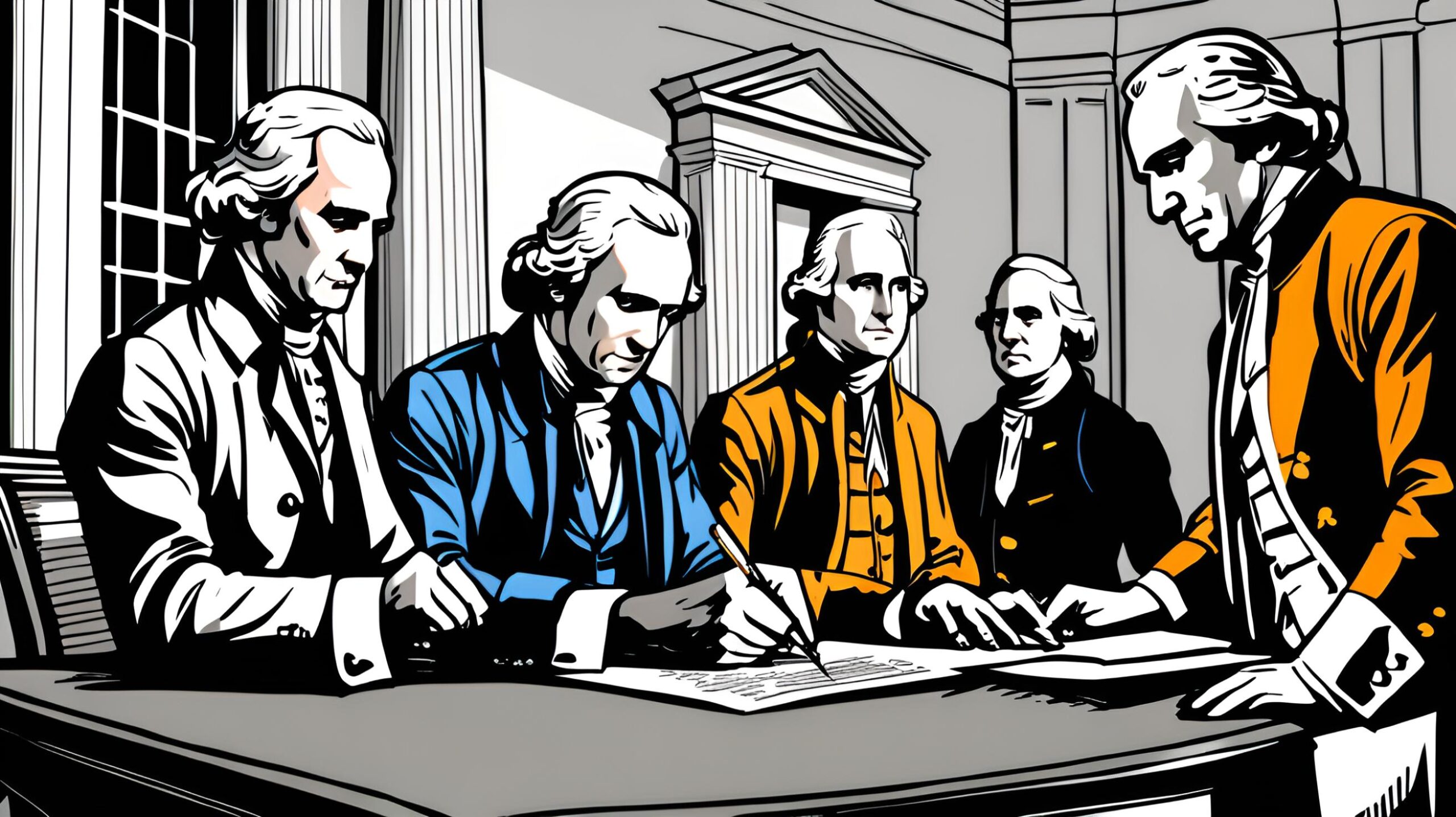Flashback to November 23
American History

1776
Delegates to the Continental Congress begin signing the United States Declaration of Independence
Read moreThe notable event of delegates to the Continental Congress commencing with the signing of the U.S. Declaration of Independence on August 2, 1776, is a cornerstone of American history. This pivotal occasion set the United States on the course to becoming an independent country, establishing the principle of citizen’s rights and democracy that continues to govern the nation today.
In the fateful summer of 1776, heated discussions about independence had reached a climax. Delegates representing the American colonies convened in Philadelphia, debating the need for severing ties with the British Crown. The resulting document—the United States Declaration of Independence—becomes the symbol of this historic decision. Its signing on the second day of August was a definitive step towards actualizing American independence.
The preparation for the Declaration of Independence was meticulous. Thomas Jefferson was primarily responsible for drafting the document, a product of his extraordinary vision and unrelenting dedication to the cause. He, along with the likes of Benjamin Franklin, John Adams, Roger Sherman, and Robert R. Livingston—collectively known as the ‘Committee of Five’—painstakingly sculpted each word, establishing the grounds for the colonists’ separation from Britain.
The United States Declaration of Independence, however, was far more than an announcement of severance—it encapsulated fundamental human rights. Phrases like “all men are created equal,” presenting life, liberty, and the pursuit of happiness as inalienable rights, are now etched forever on the canvas of human history. The document represented a remarkable leap forward in articulating the principles of human dignity and equality.
The signing process was a span of patience and persistence, as 56 delegates arrived from far and wide to endorse this historic testament. John Hancock, the President of the Continental Congress, was first to sign, his signature famously large and bold. While Hancock’s signature might be the most recognizable, each delegate’s endorsement was a testament to their commitment and bravery since the act was deemed treasonous by British authorities.
It is important to note that the signing of the Declaration was not a single-day event. While John Hancock and Charles Thompson signed the original draft on July 4, 1776, the specially ordered engrossed copy wasn’t ready for signing until August 2. The engrossing process included refining the formal document’s handwriting and signature process. Thus, August 2, 1776, holds the distinction of witnessing most signatures, while some delegates signed afterwards well into November.
Interestingly, the provenance of the Declaration of Independence was kept a secret for some time after the actual signing. The danger of retaliatory British actions meant that the identities of the signatories were not revealed until January of 1777, speaking volumes about the risks these courageous individuals took.
We strive for accuracy. If you see something that doesn't look right, click here to contact us!

